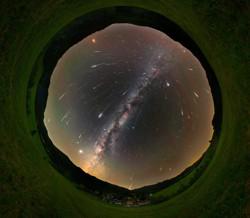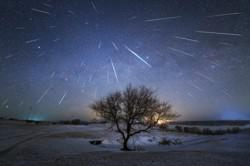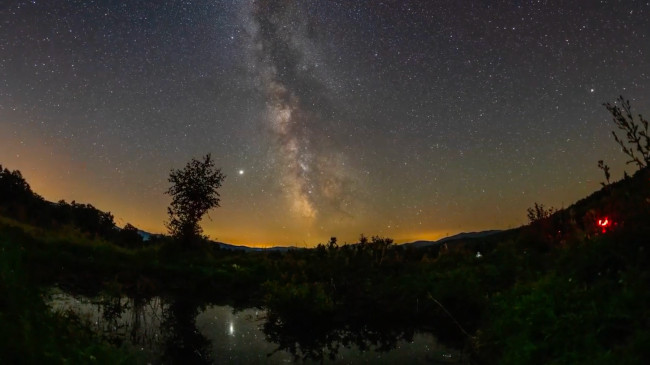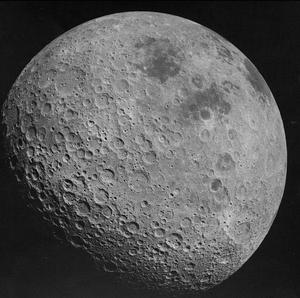Glossary term: Étoile filante
Description: Une étoile filante (ou météore) est un fragment d'astéroïde ou de comète, ou un débris spatial, qui pénètre dans l'atmosphère de la Terre ou d'un autre corps céleste et s'enflamme en raison de la chaleur générée par le frottement avec l'atmosphère. Cette chaleur générée par le frottement est similaire à la façon dont nous réchauffons nos mains en les frottant l'une contre l'autre lorsque nous avons froid. Les étoiles filantes sont généralement très petites, de quelques millimètres à quelques centimètres. Les astronomes les appellent météores. Leur direction, la période de l'année à laquelle nous les observons et leur couleur nous permettent d'en savoir plus sur leur origine et leur composition.
Les météores les plus brillants sont appelés boules de feu et sont souvent visibles dans le ciel, parfois même pendant la journée. Parfois, des observateurs ont même rapporté avoir entendu des sons lors de leur combustion et de leur déplacement dans l'atmosphère. Les étoiles filantes provoquent également une ionisation de l'atmosphère qui, pour la Terre, peut être observée à l'aide d'un radar.
Sur Terre, les étoiles filantes sont visibles tout au long de l'année, mais il arrive que de nombreuses étoiles filantes se produisent à court terme, par exemple la même nuit. Beaucoup de ces pluies de météores se répètent selon des schémas annuels prévisibles et ont reçu des noms basés sur la constellation d'où les météores semblent provenir (ou rayonner). Les pluies de météores les plus connues sont les Perséides et les Léonides.
Related Terms:
See this term in other languages
Term and definition status: The original definition of this term in English have been approved by a research astronomer and a teacher The translation of this term and its definition is still awaiting approval
The OAE Multilingual Glossary is a project of the IAU Office of Astronomy for Education (OAE) in collaboration with the IAU Office of Astronomy Outreach (OAO). The terms and definitions were chosen, written and reviewed by a collective effort from the OAE, the OAE Centers and Nodes, the OAE National Astronomy Education Coordinators (NAECs) and other volunteers. You can find a full list of credits here. All glossary terms and their definitions are released under a Creative Commons CC BY-4.0 license and should be credited to "IAU OAE".
Related Media
Gemini meteor shower, by Hao Yin, China
Credit: Hao Yin/IAU OAE
License: CC-BY-4.0 Creative Commons Attribution 4.0 International (CC BY 4.0) icons
Perseids 2020 over Dark Sky Park Poloniny, by Tomáš Slovinský, Slovakia
Credit: Tomáš Slovinský/IAU OAE
License: CC-BY-4.0 Creative Commons Attribution 4.0 International (CC BY 4.0) icons
Geminid Meteor Shower from China, by Dai Jianfeng, China
Credit: Dai Jianfeng/IAU OAE
License: CC-BY-4.0 Creative Commons Attribution 4.0 International (CC BY 4.0) icons
Between Two Skies
Credit: Fabrizio Melandri/IAU OAE
License: CC-BY-4.0 Creative Commons Attribution 4.0 International (CC BY 4.0) icons
Flowing Night Sky
Credit: Robert Barsa/IAU OAE
License: CC-BY-4.0 Creative Commons Attribution 4.0 International (CC BY 4.0) icons
Lyrid of the Lake
Credit: Jianfeng Dai/IAU OAE
License: CC-BY-4.0 Creative Commons Attribution 4.0 International (CC BY 4.0) icons
Étoile filante des Géminides
Credit: Jianfeng Dai/IAU OAE (CC BY 4.0)
License: CC-BY-4.0 Creative Commons Attribution 4.0 International (CC BY 4.0) icons
Related Activities
Meteoroids, Meteors and Meteorites
astroEDU educational activity (links to astroEDU website) Description: Unveiling the mystery of "shooting stars": meteors, meteorites and meteroidsLicense: CC-BY-4.0 Creative Commons Attribution 4.0 International (CC BY 4.0) icons
Tags: Geology Age Ranges: 6-8 , 8-10 , 10-12 , 12-14 Education Level: Middle School , Primary Areas of Learning: Interactive Lecture Costs: Low Cost Duration: 1 hour 30 mins Group Size: Group Skills: Analysing and interpreting data , Asking questions , Communicating information , Engaging in argument from evidenceImpact Craters
astroEDU educational activity (links to astroEDU website) Description: A literal Earth-Shattering experimentLicense: CC-BY-4.0 Creative Commons Attribution 4.0 International (CC BY 4.0) icons
Tags: History , Impact , Experiment Age Ranges: 10-12 , 12-14 , 14-16 Education Level: Middle School , Primary , Secondary Areas of Learning: Guided-discovery learning , Modelling , Traditional Science Experiment Costs: Low Cost Duration: 1 hour Group Size: Group Skills: Analysing and interpreting data , Asking questions , Constructing explanations , Engaging in argument from evidence , Using mathematics and computational thinking
















